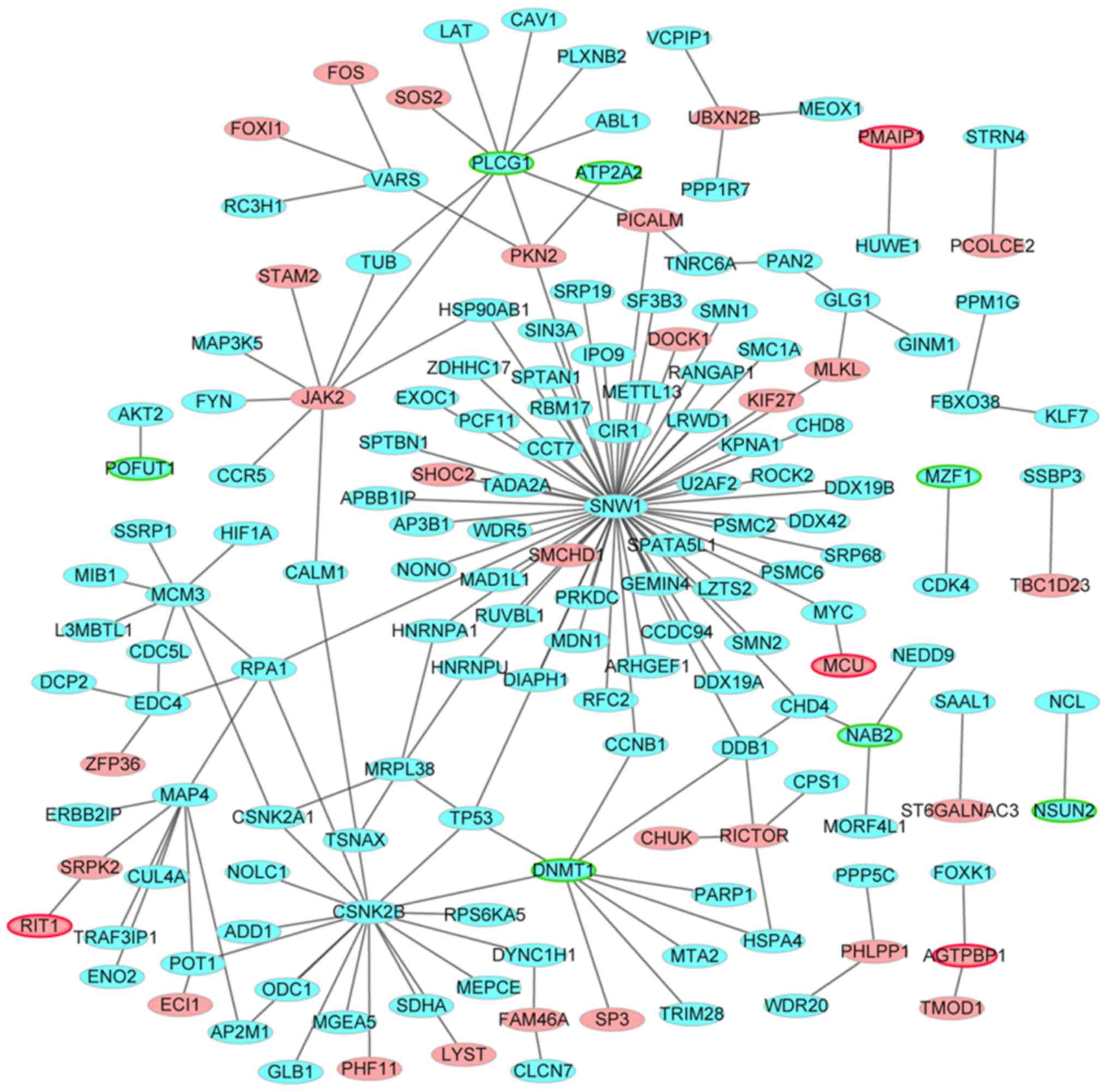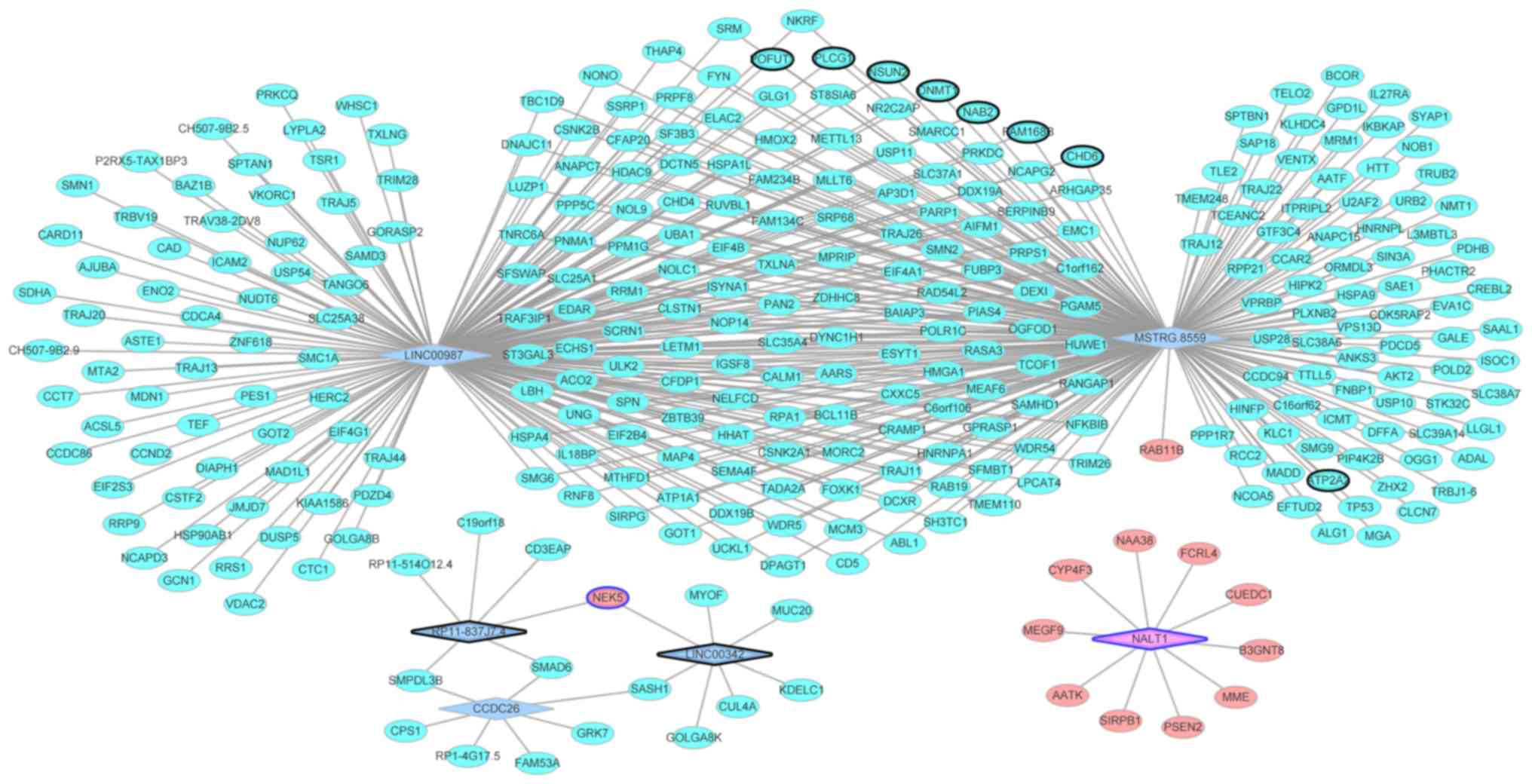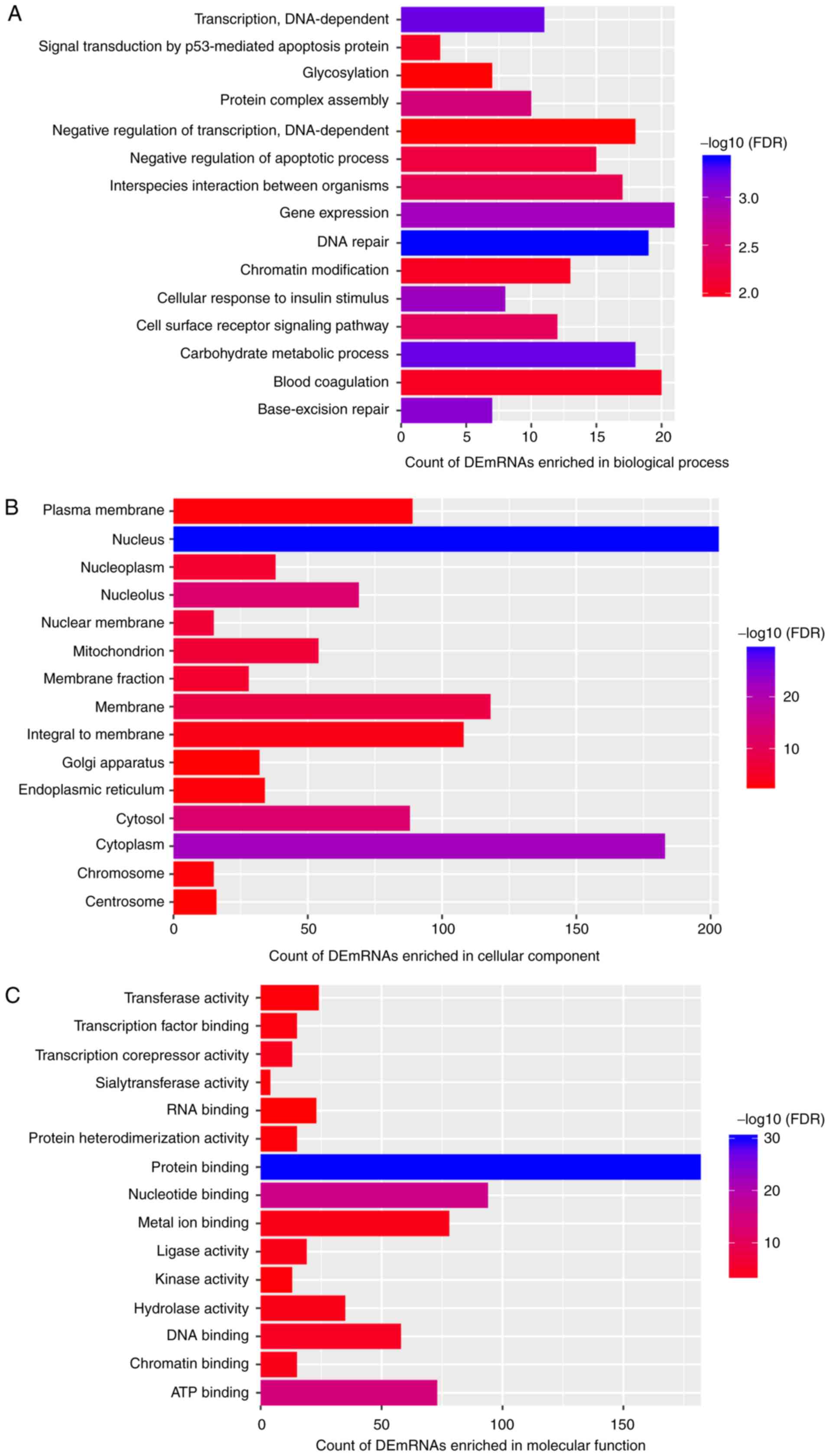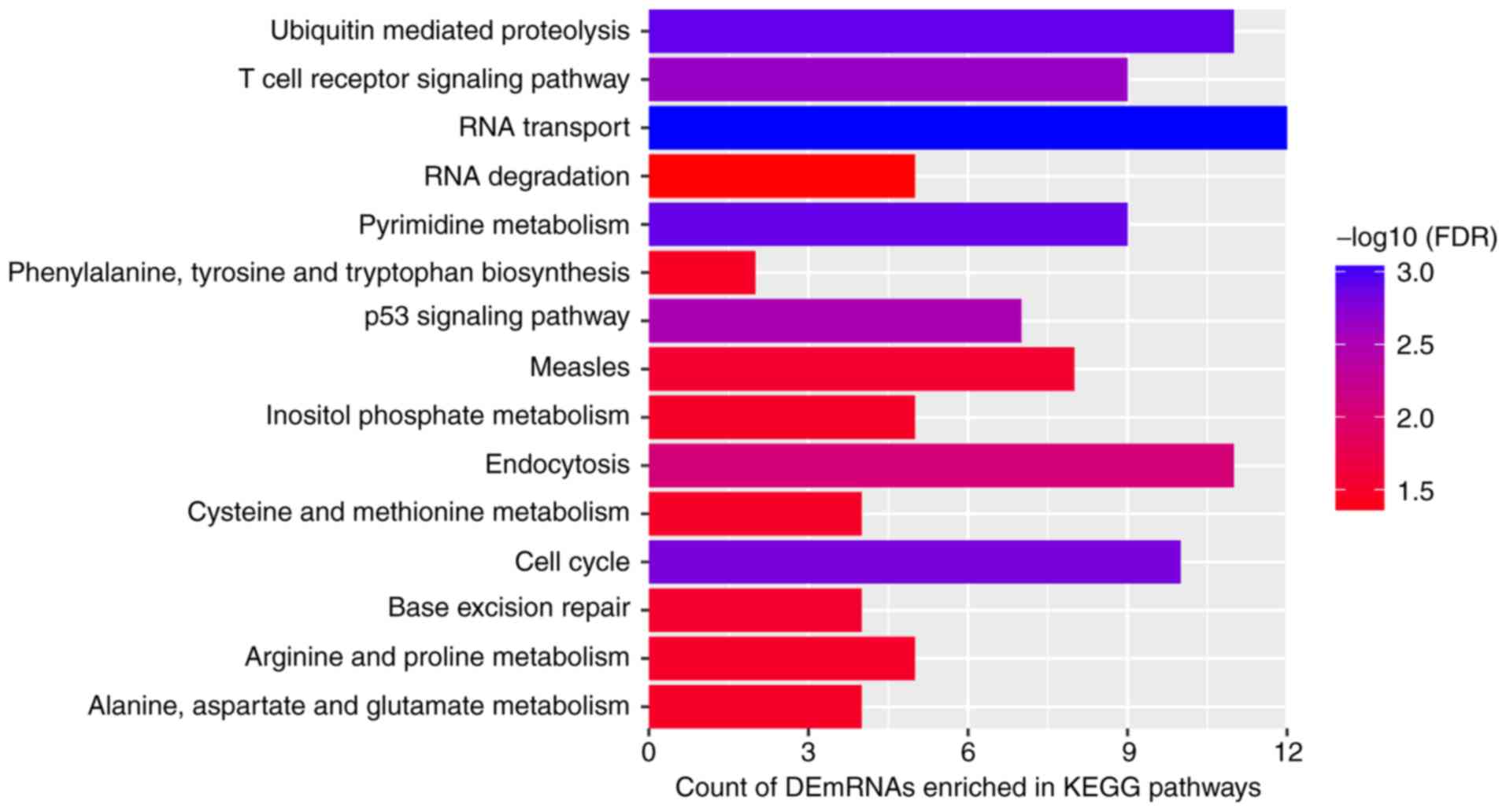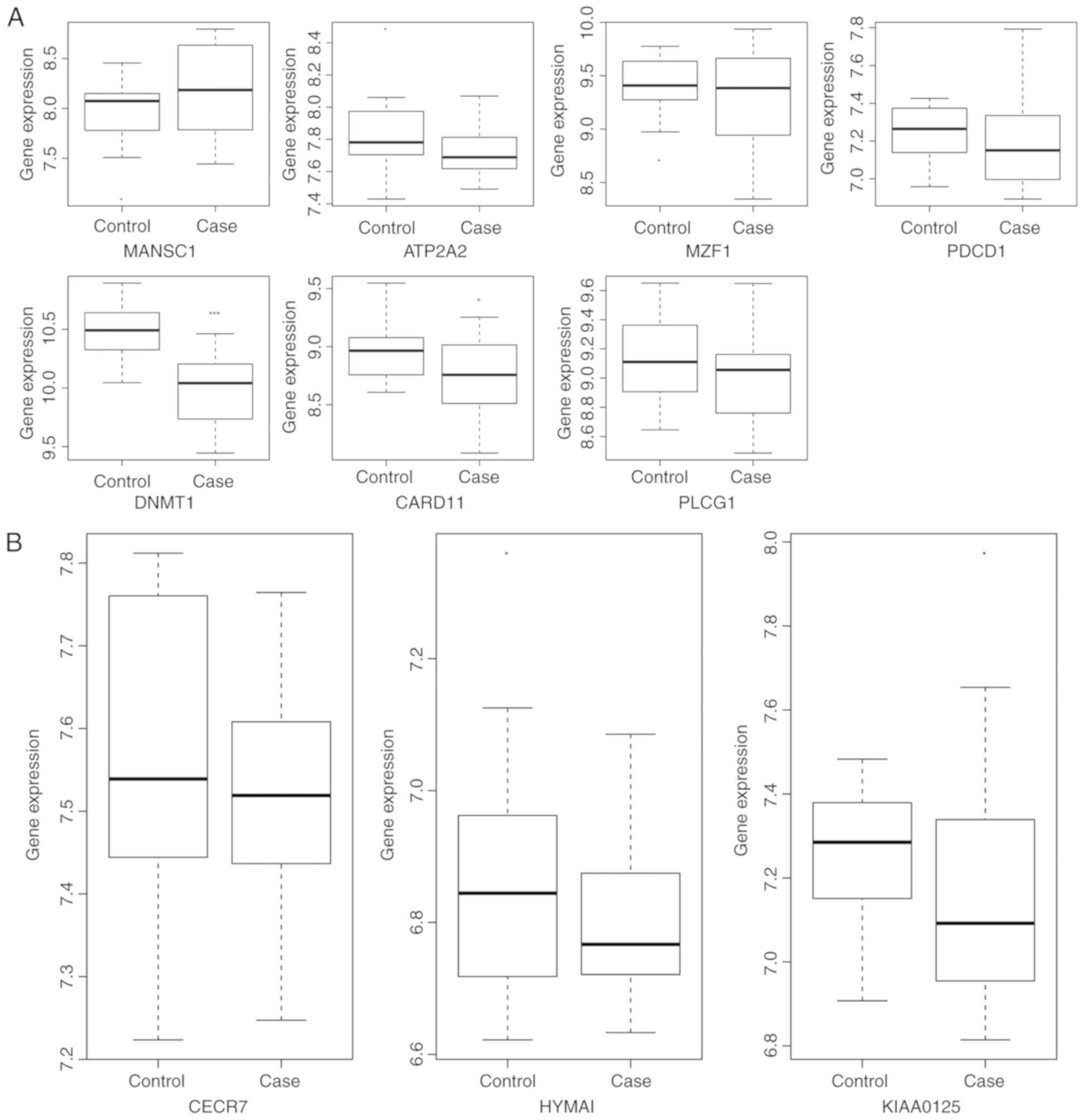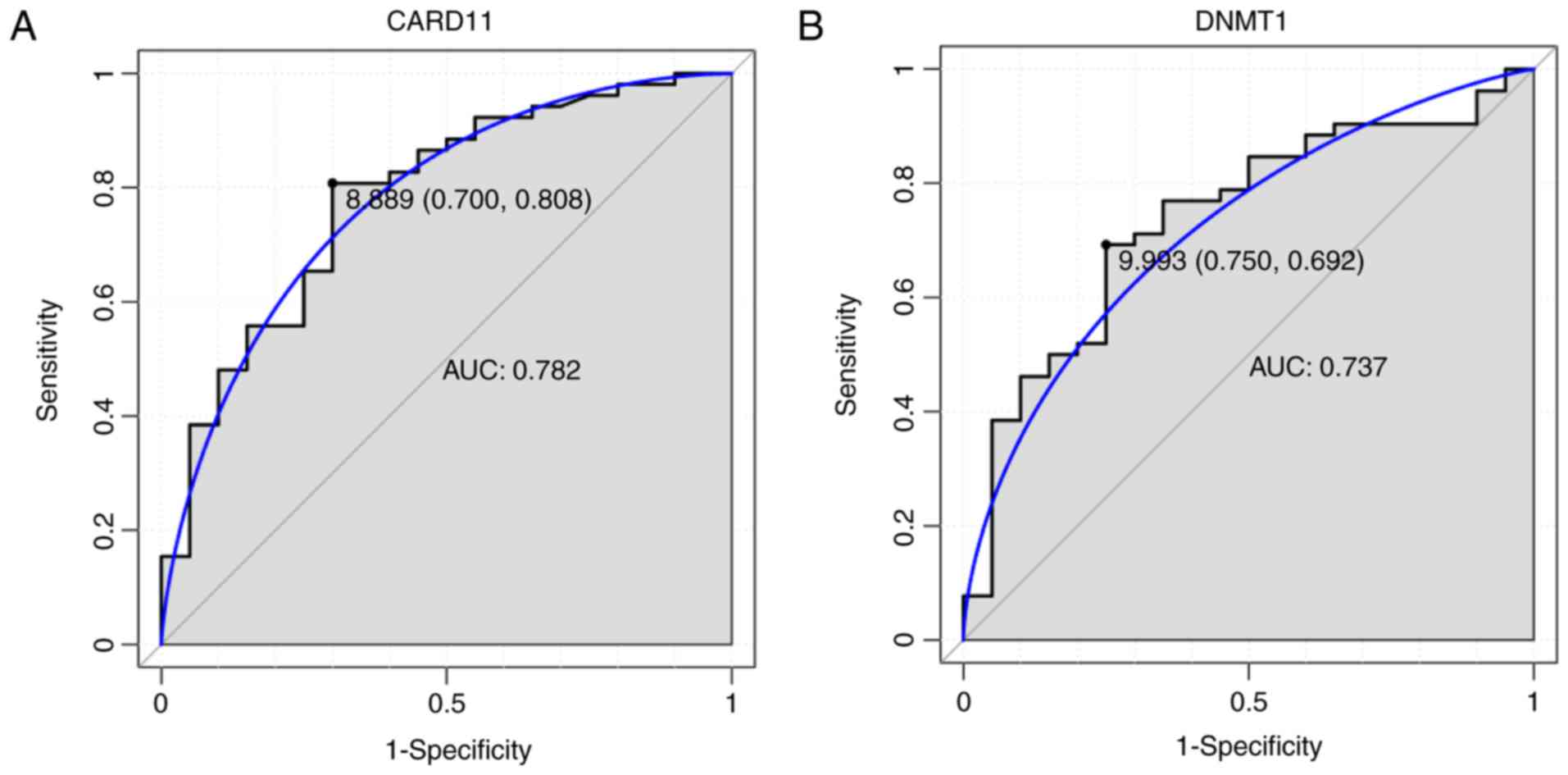|
1
|
Zhou L, Zhang Y, Xu H, Hu L, Zhang C, Sun
L, Xie Y, Lu H, Zhang Z, Hu W and Lin X: Decreased programmed
death-1 expression on the T cells of patients with ankylosing
spondylitis. Am J Med Sci. 349:488–492. 2015. View Article : Google Scholar : PubMed/NCBI
|
|
2
|
Assassi S, Reveille JD, Arnett FC, Weisman
MH, Ward MM, Agarwal SK, Gourh P, Bhula J, Sharif R, Sampat K, et
al: Whole-blood gene expression profiling in ankylosing spondylitis
shows upregulation of toll-like receptor 4–5. J Rheumatol.
38:87–98. 2011. View Article : Google Scholar
|
|
3
|
El Maghraoui A: Extra-articular
manifestations of ankylosing spondylitis: Prevalence,
characteristics and therapeutic implications. Eur J Intern Med.
22:554–560. 2011. View Article : Google Scholar : PubMed/NCBI
|
|
4
|
Smith JA: Update on ankylosing
spondylitis: Current concepts in pathogenesis. Curr Allergy Asthma
Rep. 15:4892015. View Article : Google Scholar
|
|
5
|
Evans DM, Spencer CC, Pointon JJ, Su Z,
Harvey D, Kochan G, Oppermann U, Dilthey A, Pirinen M, Stone MA, et
al: Interaction between ERAP1 and HLA-B27 in ankylosing spondylitis
implicates peptide handling in the mechanism for HLA-B27 in disease
susceptibility. Nat Genet. 43:761–767. 2011. View Article : Google Scholar : PubMed/NCBI
|
|
6
|
Davidson SI, Liu Y, Danoy PA, Wu X, Thomas
GP, Jiang L, Sun L, Wang N, Han J, Han H, et al: Association of
STAT3 and TNFRSF1A with ankylosing spondylitis in han chinese. Ann
Rheum Dis. 70:289–292. 2011. View Article : Google Scholar
|
|
7
|
Wright MW and Bruford EA: Naming 'junk':
Human non-protein coding RNA (ncRNA) gene nomenclature. Hum
Genomics. 5:90–98. 2011. View Article : Google Scholar : PubMed/NCBI
|
|
8
|
Xie Z, Li J, Wang P, Li Y, Wu X, Wang S,
Su H, Deng W, Liu Z, Cen S, et al: Differential expression profiles
of long noncoding RNA and mRNA of osteogenically differentiated
mesenchymal stem cells in ankylosing spondylitis. J Rheumatol.
43:1523–1531. 2016. View Article : Google Scholar : PubMed/NCBI
|
|
9
|
Li X, Chai W, Zhang G, Ni M, Chen J, Dong
J, Zhou Y, Hao L, Bai Y and Wang Y: Down-regulation of
lncRNA-AK001085 and its influences on the diagnosis of ankylosing
spondylitis. Med Sci Monit. 23:11–16. 2017. View Article : Google Scholar : PubMed/NCBI
|
|
10
|
Wang H, Zhao J, Zhang H, Huang Y, Wang S,
Tu Q and Yang N: CARD11 blockade suppresses murine collagen-induced
arthritis via inhibiting CARD11/Bcl10 assembly and T helper type 17
response. Clin Exp Immunol. 176:238–245. 2014. View Article : Google Scholar : PubMed/NCBI
|
|
11
|
Mahurkar S, Moldovan M, Suppiah V and
O'Doherty C: Identification of shared genes and pathways: A
comparative study of multiple sclerosis susceptibility, severity
and response to interferon beta treatment. PLoS One. 8:e576552013.
View Article : Google Scholar : PubMed/NCBI
|
|
12
|
O'Brien SA, Zhu M and Zhang W: The
importance of IL-6 in the development of LAT-mediated autoimmunity.
J Immunol. 195:695–705. 2015. View Article : Google Scholar : PubMed/NCBI
|
|
13
|
Aslani S, Mahmoudi M, Garshasbi M,
Jamshidi AR, Karami J and Nicknam MH: Evaluation of DNMT1 gene
expression profile and methylation of its promoter region in
patients with ankylosing spondylitis. Clin Rheumatol. 35:2723–2731.
2016. View Article : Google Scholar : PubMed/NCBI
|
|
14
|
Langfelder P and Horvath S: WGCNA: An R
package for weighted correlation network analysis. BMC
Bioinformatics. 9:5592008. View Article : Google Scholar : PubMed/NCBI
|
|
15
|
Jiang W, Liu Y, Liu R, Zhang K and Zhang
Y: The lncRNA DEANR1 facilitates human endoderm differentiation by
activating FOXA2 expression. Cell Rep. 11:137–148. 2015. View Article : Google Scholar : PubMed/NCBI
|
|
16
|
Wang P, Ning S, Zhang Y, Li R, Ye J, Zhao
Z, Zhi H, Wang T, Guo Z and Li X: Identification of
lncRNA-associated competing triplets reveals global patterns and
prognostic markers for cancer. Nucleic Acids Res. 43:3478–3489.
2015. View Article : Google Scholar : PubMed/NCBI
|
|
17
|
Fei Q, Bai X, Lin J, Meng H, Yang Y and
Guo A: Identification of aberrantly expressed long non-coding RNAs
in postmenopausal osteoporosis. Int J Mol Med. 41:3537–3550.
2018.PubMed/NCBI
|
|
18
|
Chen WC, Wei CC, Lu HF, Wong HS, Woon PY,
Hsu YW, Huang JD and Chang WC: rs657075 (CSF2) is associated with
the disease phenotype (BAS-G) of ankylosing spondylitis. Int J Mol
Sci. 18:E832017. View Article : Google Scholar : PubMed/NCBI
|
|
19
|
Wang L, Chen Z, An L, Wang Y, Zhang Z, Guo
Y and Liu C: Analysis of long non-coding RNA expression profiles in
non-small cell lung cancer. Cell Physiol Biochem. 38:2389–2400.
2016. View Article : Google Scholar : PubMed/NCBI
|
|
20
|
Peng W and Jiang A: Long noncoding RNA
CCDC26 as a potential predictor biomarker contributes to
tumorigenesis in pancreatic cancer. Biomed Pharmacother.
83:712–717. 2016. View Article : Google Scholar : PubMed/NCBI
|
|
21
|
Hirano T, Yoshikawa R, Harada H, Harada Y,
Ishida A and Yamazaki T: Long noncoding RNA, CCDC26, controls
myeloid leukemia cell growth through regulation of KIT expression.
Mol Cancer. 14:902015. View Article : Google Scholar : PubMed/NCBI
|
|
22
|
Wang S, Hui Y, Li X and Jia Q: Silencing
of lncRNA-CCDC26 restrains the growth and migration of glioma cells
in vitro and in vivo via targeting miR-203. Oncol Res.
26:1143–1154. 2018. View Article : Google Scholar
|
|
23
|
Xu H, Liew LN, Kuo IC, Huang CH, Goh DL
and Chua KY: The modulatory effects of
lipopolysaccharide-stimulated B cells on differential T-cell
polarization. Immunology. 125:218–228. 2010. View Article : Google Scholar
|
|
24
|
Huan J, Kaler LJ, Mooney JL, Subramanian
S, Hopke C, Vandenbark AA, Rosloniec EF, Burrows GG and Offner H:
MHC class II derived recombinant T Cell receptor ligands protect
DBA/1LacJ mice from collagen-induced arthritis. J Immunol.
180:1249–1257. 2008. View Article : Google Scholar : PubMed/NCBI
|
|
25
|
Landers-Ramos RQ, Sapp RM, Jenkins NT,
Murphy AE, Cancre L, Chin ER, Spangenburg EE and Hagberg JM:
Chronic endurance exercise affects paracrine action of
CD31+ and CD34+ cells on endothelial tube formation. Am
J Physiol Heart Circ Physiol. 309:H407–H420. 2015. View Article : Google Scholar : PubMed/NCBI
|
|
26
|
Azizi E, Massoud A, Amirzargar AA,
Mahmoudi M, Soleimanifar N, Rezaei N, Jamshidi AR, Nikbin B and
Nicknam MH: Association of CTLA4 gene polymorphism in Iranian
patients with ankylosing spondylitis. J Clin Immunol. 30:268–271.
2010. View Article : Google Scholar
|
|
27
|
Yang PT, Kasai H, Zhao LJ, Xiao WG, Tanabe
F and Ito M: Increased CCR4 expression on circulating CD4(+) T
cells in ankylosing spondylitis, rheumatoid arthritis and systemic
lupus erythematosus. Clin Exp Immunol. 138:342–347. 2004.
View Article : Google Scholar : PubMed/NCBI
|
|
28
|
Jandus C, Bioley G, Rivals JP, Dudler J,
Speiser D and Romero P: Increased numbers of circulating
polyfunctional Th17 memory cells in patients with seronegative
spondylarthritides. Arthritis Rheum. 58:2307–2317. 2008. View Article : Google Scholar : PubMed/NCBI
|
|
29
|
Keir ME, Butte MJ, Freeman GJ and Sharpe
AH: PD-1 and its ligands in tolerance and immunity. Annu Rev
Immunol. 26:677–704. 2008. View Article : Google Scholar : PubMed/NCBI
|
|
30
|
Shinohara T, Taniwaki M, Ishida Y,
Kawaichi M and Honjo T: Structure and chromosomal localization of
the human PD-1 gene (PDCD1). Genomics. 23:704–706. 1994. View Article : Google Scholar : PubMed/NCBI
|
|
31
|
Bertin J, Wang L, Guo Y, Jacobson MD,
Poyet JL, Srinivasula SM, Merriam S, DiStefano PS and Alnemri ES:
CARD11 and CARD14 are novel caspase recruitment domain
(CARD)/membrane-associated guanylate kinase (MAGUK) family members
that interact with BCL10 and activate NF-kappa B. J Biol Chem.
276:11877–11882. 2001. View Article : Google Scholar : PubMed/NCBI
|
|
32
|
Chabaud M, Fossiez F, Taupin JL and
Miossec P: Enhancing effect of IL-17 on IL-1-induced IL-6 and
leukemia inhibitory factor production by rheumatoid arthritis
synoviocytes and its regulation by Th2 cytokines. J Immunol.
161:409–414. 1998.PubMed/NCBI
|
|
33
|
Maddur MS, Miossec P, Kaveri SV and Bayry
J: Th17 cells: Biology, pathogenesis of autoimmune and inflammatory
diseases, and therapeutic strategies. Am J Pathol. 181:8–18. 2012.
View Article : Google Scholar : PubMed/NCBI
|
|
34
|
Yan P, Luo S, Lu JY and Shen X: Cis- and
trans-acting lncRNAs in pluripotency and reprogramming. Curr Opin
Genet Dev. 46:170–178. 2017. View Article : Google Scholar : PubMed/NCBI
|
|
35
|
Pian L, Wen X, Kang L, Li Z, Nie Y, Du Z,
Yu D, Zhou L, Jia L, Chen N, et al: Targeting the IGF1R pathway in
breast cancer using antisense lncRNA-mediated promoter cis
competition. Mol Ther Nucleic Acids. 12:105–117. 2018. View Article : Google Scholar : PubMed/NCBI
|
|
36
|
Lipovich L: Abstract IA3: Regulatory
networks in onco-lncRNAomics: Cis-regulation and non-conservation.
Indian J Microbiol. 52:400–405. 2012.
|















